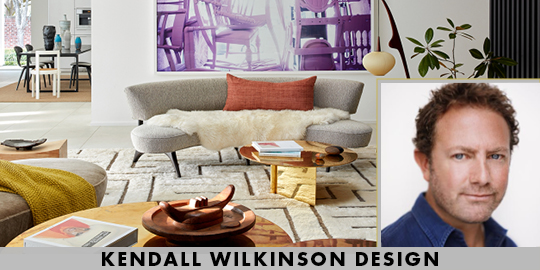10 Top Designers Reveal Their Passion For Collecting - And Share Expert Tips
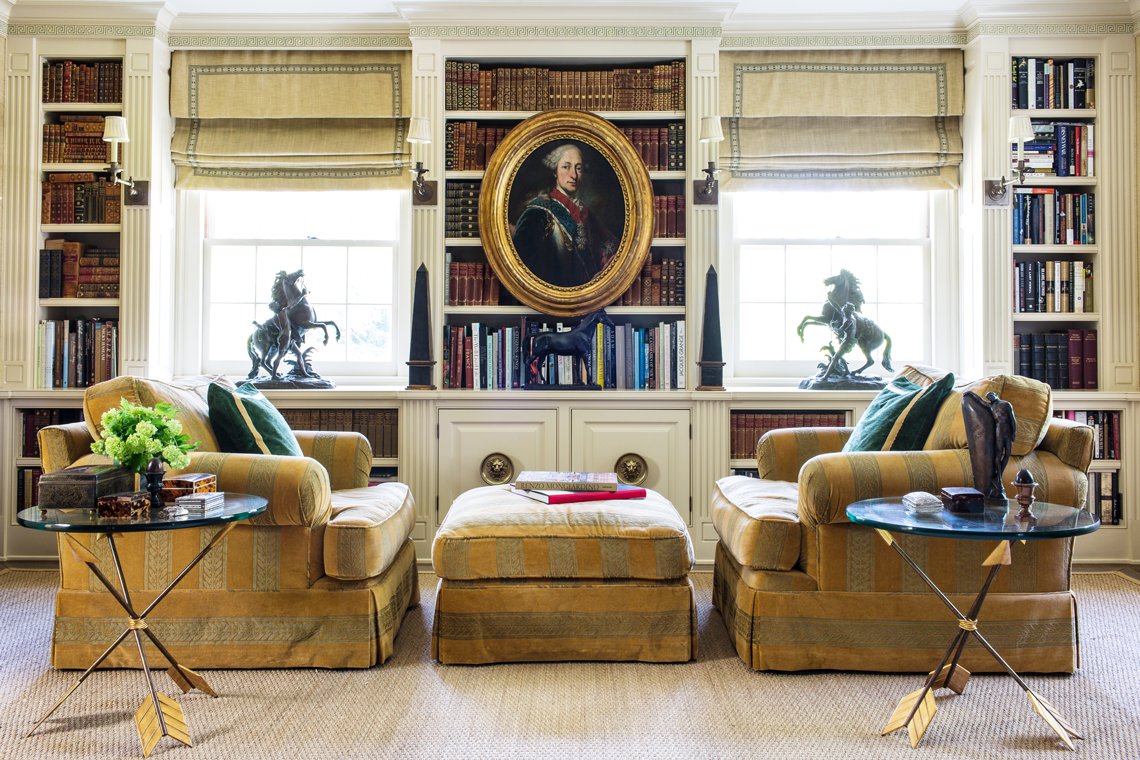 |
Inside interior designer Timothy Corrigan’s Los Angeles Georgian Colonial home, the seating area in the primary bedroom is richly layered with his collections of antique leather-bound books, bronze sculptures, obelisks, one example from his large collection of portraits, and decorative boxes in tortoiseshell, marquetry, abalone and silver. Photo by Nicole Lamott. |
Style experts' advice just in time for The San Francisco Fall Show, open now through October 25th online on Incollect
Collections tell our personal stories; they're visual representations of what we respond to and how we see the world. Sharing those stories by curating and displaying collections in interiors elevates the emotional impact of a room, reminding us of where we've been and what we've seen. Interior design has often been described as the art of storytelling through furnishings, textiles and accessories, so we asked ten top talents to tell us how they create uniquely personal narratives with collections. Leading off our list is The San Francisco Fall Show Chair (now six years running) and AD100 designer Suzanne Tucker of Tucker & Marks, who finds her bliss in sentimental snuff boxes, and – of all things – frogs. Suzanne attended the first edition of the Show in 1981, accompanying her mentor, design legend Michael Taylor. In the ensuing 39 years, she has missed only one show, and has served on the Show’s advisory board and as Designer Circle Chair for many years. This year, the Show is being presented virtually on Incollect, from October 16th to Sunday, October 25th. With over 75 dealers representing all styles and periods – 90% of the Show's loyal dealers returning, with never-before-seen pieces, and many new and exciting dealers added to the lineup – the Show will be a collector's paradise. Or as Suzanne said, “For anyone interested in art and design, furniture and the decorative arts – buying, collecting, or simply learning about art and antiques – this 10-day online event is not to be missed."
 |
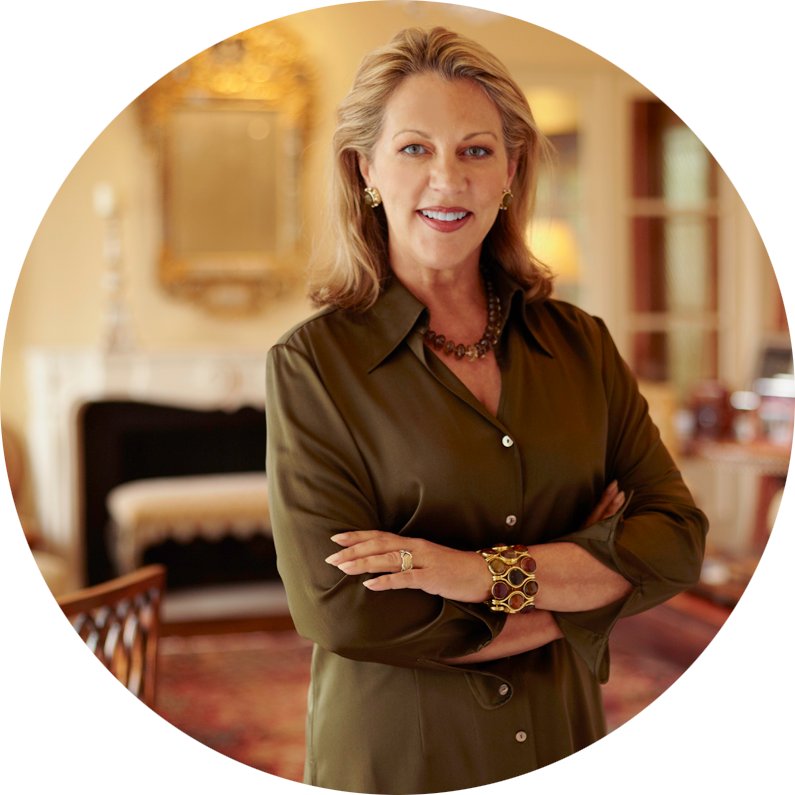 | |
Suzanne Tucker, photo by Michal Venera |
SUZANNE TUCKER, TUCKER & MARKS
What do you collect, and what was the piece that inspired you to begin?
I don't consider myself to be a “collector” in a grandiose sort of way, but I am rather more of an accumulator! For example, I have a treasured collection of antique cowrie shell snuff boxes. These shells weren’t something I actively sought but were inspired when a dear family friend died. She lived to 100, was like a grandmother to me, and Tim and I were married at her house. She had three cowrie snuffs on a chest of drawers as you entered her living room and I was lucky enough to be the recipient. That was 24 years ago and I have become obsessed with searching for them and adding to the collection whenever I find them. They are now on display on a Chinese lacquer chest as I enter my living room and I am reminded of a dear lady every time I see them. I am rather sentimental about many pieces in my house that tug at my heartstrings. They are either family pieces or from the collections of designers and people with great taste whom I have admired. At the risk of blatantly dropping names, there are pieces from Albert Hadley, Sister Parrish, Tony Hail, Tony Duquette, numerous pieces from Michael Taylor, of course, and various pieces from great ladies of style — Dodie Rosekrans, Elaine McKeon, Bunny Mellon, Diana Dollar Knowles, Pamela Harriman, Brooke Astor, and others. It’s the personal draw for me and their sentimental provenance which wouldn’t be there for someone else. Those pieces will always be staying.
For beginning collectors, can you suggest some categories or themes that might be good jumping off points?
My philosophy when buying anything: always buy the best quality you can afford and only buy what speaks to you on a personal level. Where people make mistakes is following trends and what they think they “should” buy. It's ultimately not about buying what is “hot” at the moment, that is the definition of a trend.
What is your advice on displaying collections — dos and don'ts?
Don't hide things away, live with them and enjoy them. I never understood the idea of using the “good” silver or crystal just a few times a year. That goes for anything you bring into your home. And aesthetically speaking: things always look better when similar items are grouped, rather than dispersed all over your house. They become far more impactful.
Any tips on talking to dealers, and what are some important questions to ask?
There are no dumb questions: develop a curiosity and ask, ask ask! Dealers love to talk about their pieces — the provenance, the history, the materials and techniques used, why it's rare, what makes it special... That's where education starts and one begins to develop a deeper understanding and depth of knowledge. For me, it's a lifelong passion and I am an eternal student.
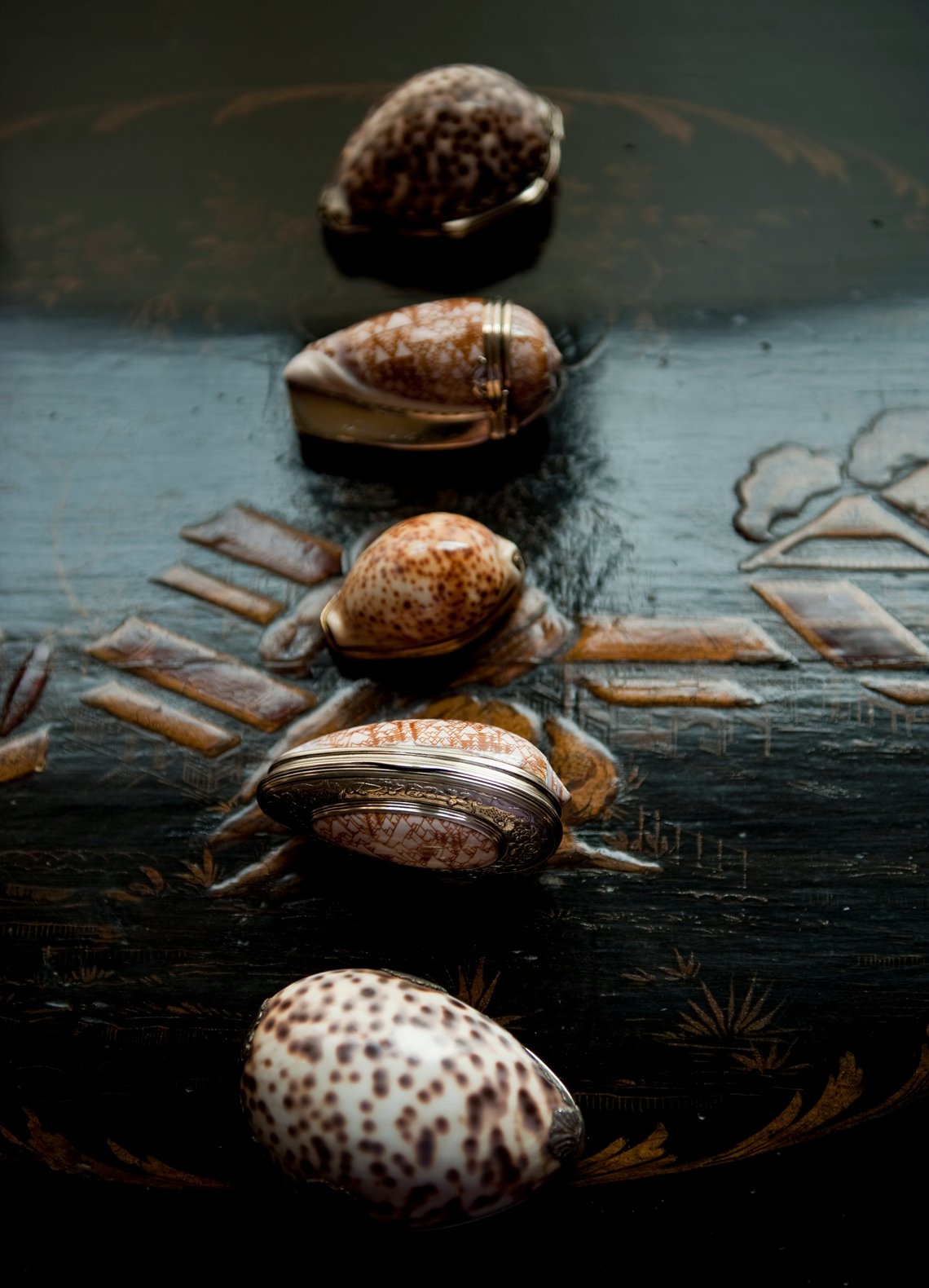 |  | |
Left: Suzanne's sentimental collection of cowrie shell snuff boxes. Right: A large gilt-bronze frog from Tony Duquette's estate, just one from her collection of these traditional symbols of transition, good luck and abundance. Photos by Edward Addeo. | ||
 |
 | |
Douglas Durkin |
DOUGLAS DURKIN, DOUGLAS DURKIN DESIGN
What do you collect, and what was the piece that inspired you to begin?
Simply, I collect what I like. And I like a great many things. I am drawn to shapes, material, age, artisanship, and utility in things from the past, and also a great many 20th century and contemporary pieces. I am not dogmatic in my collecting, and I think for me the variety in my collection is connected to my ultimate curiosity around history and the arts. I am also not afraid of pieces that show wear. Perfection of condition is not what my eye is after.
For beginning collectors, can you suggest some categories or themes that might be good jumping off points?
Only one thing: Be curious. I think that true collectors have a deep curiosity about what interests their eye. And becoming educated and working towards developing one’s own eye is key. Going to fairs, even online these days, is a wonderful way of seeing a great number of works and objects. Auction houses provide an immediate history of what you are viewing, and of course, nothing beats an in-depth conversation with a dealer. Dealers are experts, and very typically passionate about their stock. They have no interest in intimidation, and are in general more interested in educating a client about what they are bringing to the table. A great dealer will be more interested in the development of a relationship than just the one-off sale. As in all things in life, relationships count.
 |
A vignette from Douglas’s own collection of 12th-16th century Asian Trade ceramics, Majapahit Empire Javanese 15th century bronzes, 18th century Southeast Asian carved deities, and European antiques, including a pair of 18th century Italian Altar candlestands and a 17th century Chinoiserie Dutch leather panel. |
What is your advice on displaying collections — dos and don'ts?
My advice is to have fun! I move my things around often, as by moving them and recombining ideas, it breathes new life into the pieces. There are no rules and interiors are not static things. You get good at collage by doing it.
Any tips on talking to dealers, and what are some important questions to ask?
Start the conversation in regards to a piece that catches your eye. It's ok to know nothing about it. Humility is a wonderful way to enter a conversation, and you will find most great dealers will give you a wealth of information, without the pressure of you having to buy it. I think to get the history and background of something from a knowledgeable professional can elevate even the smallest object into something quite compelling.
 |
 | |
Madeline Stuart |
MADELINE STUART
MADELINE STUART ASSOCIATES
What do you collect, and what was the piece that inspired you to begin?
I find that most designers are borderline hoarders, so I say with some level of mortification that I collect LOTS of things, from Japanese bronzes to vintage clothing. But without question, my true collecting obsession would be books. New books, antique books, vintage books, rare and collectible books. My library covers myriad topics and encompasses various areas of interest. One of the first books to inspire my collection is titled Spanish Influence on American Architecture and Decoration, by R.W. Sexton, published in 1927. I think I paid $900 for it over 28 years ago, which was a bankroll for me at that time.
For beginning collectors, can you suggest some categories or themes that might be good jumping off points?
Art pottery might be a good place to start. You can find interesting pieces for very little money, and then graduate to signed pieces by notable ceramic artisans.
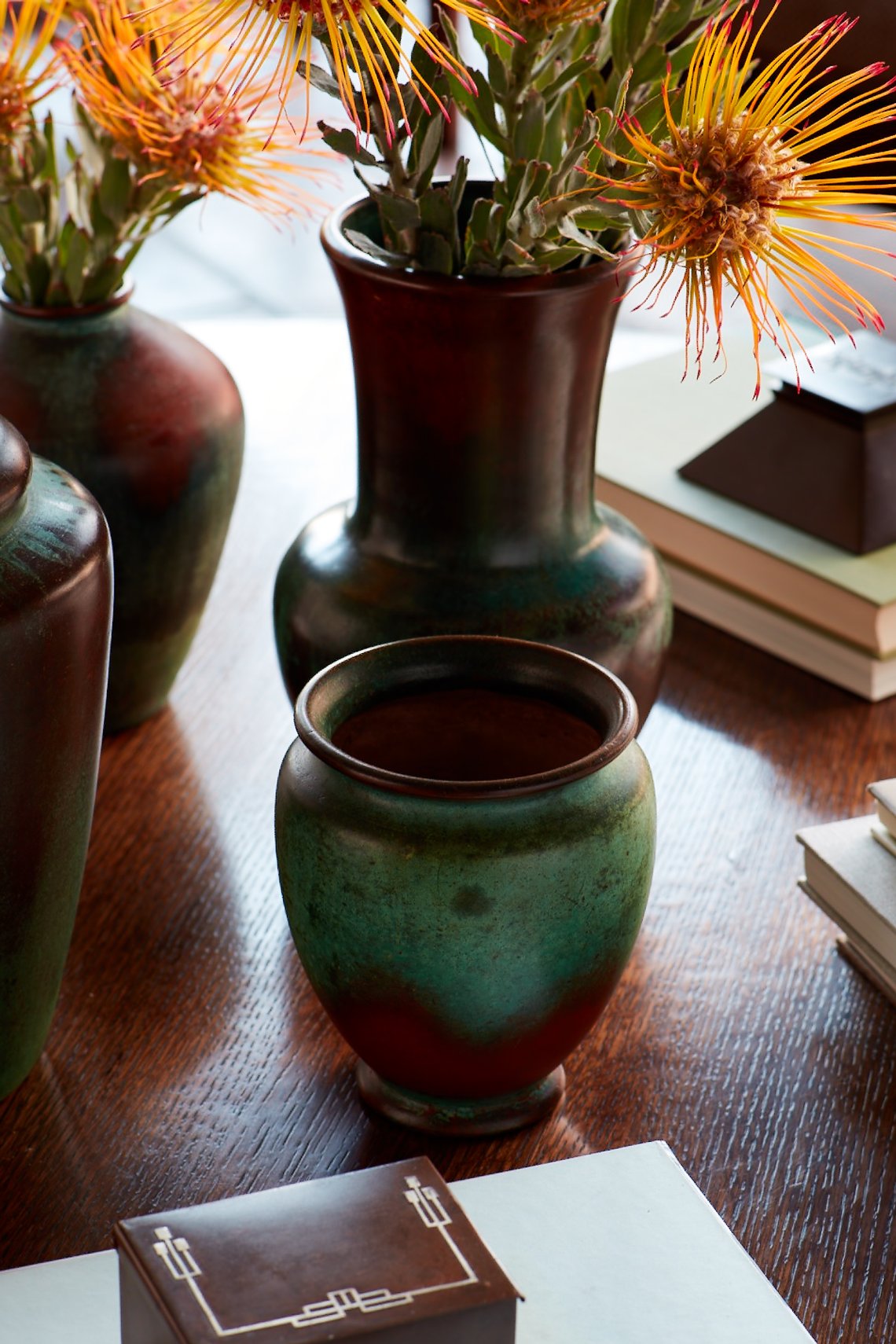 |  | |
| Left: Madeline Stuart assembled a grouping of Arts and Crafts pottery for her client’s home, which she conceived as a Modernist homage to the great Pasadena architects Greene & Greene. She recommends art pottery as a good category for beginning collectors. Photo by Trevor Tondro Right: Describing her love for collecting books as an obsession, a careful examination of this photo reveals two things: 1. the eclectic nature of the designer’s interests and 2. that these books are referred to — a lot — as evidenced by the many, many bookmarks sticking up in volume after volume. | ||
What is your advice on displaying collections — dos and don'ts?
The nice thing about books is that they can be displayed EVERYWHERE! On the floor, on top of tables, and of course in bookshelves. Displaying objects is a bit more difficult to do if you collect vintage jewelry or clothing, but then again, I’ve seen collections of bakelite handbags used to great effect as a decorative element in a room. I tend to like collections of smaller things massed together in groupings for impact.
Any tips on talking to dealers, and what are some important questions to ask?
Get to know the dealers who represent your area of interest. They absolutely LOVE talking about whatever it is they’re selling. Their wares are their passion, and you can learn a great deal just by engaging in casual conversation. Ask questions about rarity, the various makers or creators, and whether the item will hold its value.
 |
 | |
Timothy Corrigan, photo by Cheyenne Ellis |
TIMOTHY CORRIGAN, TIMOTHY CORRIGAN INC.
What do you collect, and what was the piece that inspired you to begin?
I love collecting portraits because they not only show the person, but there is so much iconography in many portraits that give subtle clues into the world of the subject of the painting. My collection includes works from the 17th century: Caravaggio; 18th century: Nicolas Largillière, Jean-Baptiste Perronneau, and Pierre-Paul Prud’hon. 19th century: Jacques-Louis David, Henri Fantin-Latour, Carolus-Duran, Baron Gerard, Dubuffe, and Emile Levy. 20th century: Jean Cocteau, Don Bachardy.
It started out with inheriting family portraits. I didn’t have a great appreciation for them because they were just old people I couldn’t relate to. But that quickly changed when I attended an Ingres exhibition at the Frick where I became fascinated with the iconography of a portrait and not just how the sitter looked. It’s all the other elements that matter; if there’s a globe, it says someone travels, or a woman wearing a paisley shawl shows that she’s from the upper class but slightly bohemian.
 | |
In the entry of Timothy Corrigan’s Los Angeles home, a painting by Jacques-Louis David is a study for his work Leonidas at Thermopylae, in the collection of the Louvre. Below is an eighteenth-century marquetry chest of drawers, an eighteenth-century German clock, and a pair of porphyry marble obelisks. Photo by Nicole LaMotte. |
For beginning collectors, can you suggest some categories or themes that might be good jumping off points?
Ideally anything that is of personal interest is the best place to start a collection. It could be anything from match strikers, pottery, antique furniture, photography, and art.
What is your advice on displaying collections — dos and don'ts?
Collections always have more impact when grouped together, and finding interesting ways to display them gets them noticed. For example, when it comes to portraits, I really like mixing portraits of different periods together. You can also mix sizes, and mediums such as pastels, watercolors, and oils. We had a client who collected toy super-heroes so we built shelves on the walls of his home office where he could display them. Another client was an avid wine collector, so we lined his living room walls with beautiful refrigerated mahogany wine cabinets, and now that is the most used room in the house.
Any tips on talking to dealers, and what are some important questions to ask?
Don’t be afraid to ask what seem like naïve questions of dealers…they are incredible sources of information and are delighted to share their knowledge with you. Once you figure out what kind of art, furniture or object you think that you might be interested in collecting, you should use dealers as a terrific source of education. Certainly, dealers want to sell their goods, but they also understand that a large part of their job is helping to educate their clients about what they have. So, feel free to ask away and don’t be intimidated by their knowledge.
 |
 | |
Pamela Babey |
PAMELA BABEY, BAMO
What do you collect, and what was the piece that inspired you to begin?
My collections are emotional; they are not investments, they are about interests, learning, and they are full of memories. One college summer, I had my first breathtaking arrival in Venice. The city was immediately energizing and invariably inspirational, and I found myself instantly attracted to the traditions and the artisans - the paper, the glass, the plaster walls. I purchased a flower, a simple wire armature beaded with Venetian glass; something I could easily put in my suitcase, something that would not break. Thus, began the hunt. At the time I never would have imagined that this small delight would lead to crates arriving with fanciful chandeliers! Professionally I would have many opportunities to work in Murano, creating custom pieces for projects, all the while gaining bits of knowledge about glass making. In addition, the search for information and history lead to many friends and long-standing relationships. My collection began with something I enjoyed visually, associated with a city that I love, and eventually became a part of my lifestyle. This kinetic quality about collecting takes you on paths you may not imagine, it is the ultimate scavenger hunt!
 |
| Pamela’s collections of Venetian glass, from the utilitarian to the fanciful, and bottom row, second frame from the left, an example of the beaded glass flowers that began her collection. |
For beginning collectors, can you suggest some categories or themes that might be good jumping off points?
If you are on a quest to collect, begin with something you enjoy or are attracted to, perhaps something that links an object to history or culture; look at books, auction catalogues, talk to people, explore. You might find interest in spoons, simple you could say, but think of how long this utensil has survived and its many forms throughout history. Begin with research, but to truly learn you must "feel the goods." Clues come in the weight, the edges, the joints, the surface, this is how to understand the language of the piece.
What is your advice on displaying collections — dos and don'ts?
When it comes to showcasing your collection, I say refrain from "display." This is your home, not a museum. I enjoy my glass by using it every day: Wine glasses, goblets or tumblers, nuts or ice cream dishes, a glass tazza with tomatoes from the farmer's market. I love my garden roses in lovely vases from Venice. If someone turns on your Dornbracht faucet and the water pressure shatters the feather-light glass in the sink: such is life. Put the shatters in the garden. While not in use, make your pieces look their best. Lighting is a very important quality and should be done correctly (not commercially). For Venetian glass, in particular, it adds a little sparkle and reflection, and enhances the shape or the color. To showcase you might use a glass cabinet, practical for both dusting and storing, and of course, add mirrors to multiply your collection.
Any tips on talking to dealers, and what are some important questions to ask?
Work with people you trust. Dealers are passionate, they will enjoy telling you about your interests and filling in the gaps, often elaborately and sometimes embellished. As you continue down your path you will learn, asking questions about origin, hallmarks, age indications, condition. Once, when antique shopping in Italy for the Four Seasons Milano, the dealers kept describing items as "coppia." I was appalled, I thought it was a "copy"; but no.... it meant a pair! You must decide if you want only PERFECT pieces or dents are not a problem. if perfection is your goal, you will most likely need relationships to find these. In any case, the conversations will lead to information and enjoyment.
 |
 | |
Jeffry Weisman, photo by Meg Messina |
JEFFRY WEISMAN, FISHER WEISMAN
What do you collect, and what was the piece that inspired you to begin?
We have collections of a zillion things but one of the quirkiest is Andrew’s collection of miniature tortoise shell rickshaws, which were made as souvenirs for Asian visitors in the 19th century. Since a passion for shopping is in both of our genetic codes, we decided early on to focus on collecting things that are expensive and hard to find as a way to limit how much stuff we would end up having to curate.
For beginning collectors, can you suggest some categories or themes that might be good jumping off points?
My mother always said that when you are considering buying something expensive that isn’t a necessity, sleep on it and if you wake up the next morning and are still dying to possess it, it is meant to be yours. I find that’s a good way to both decide what and when to collect.
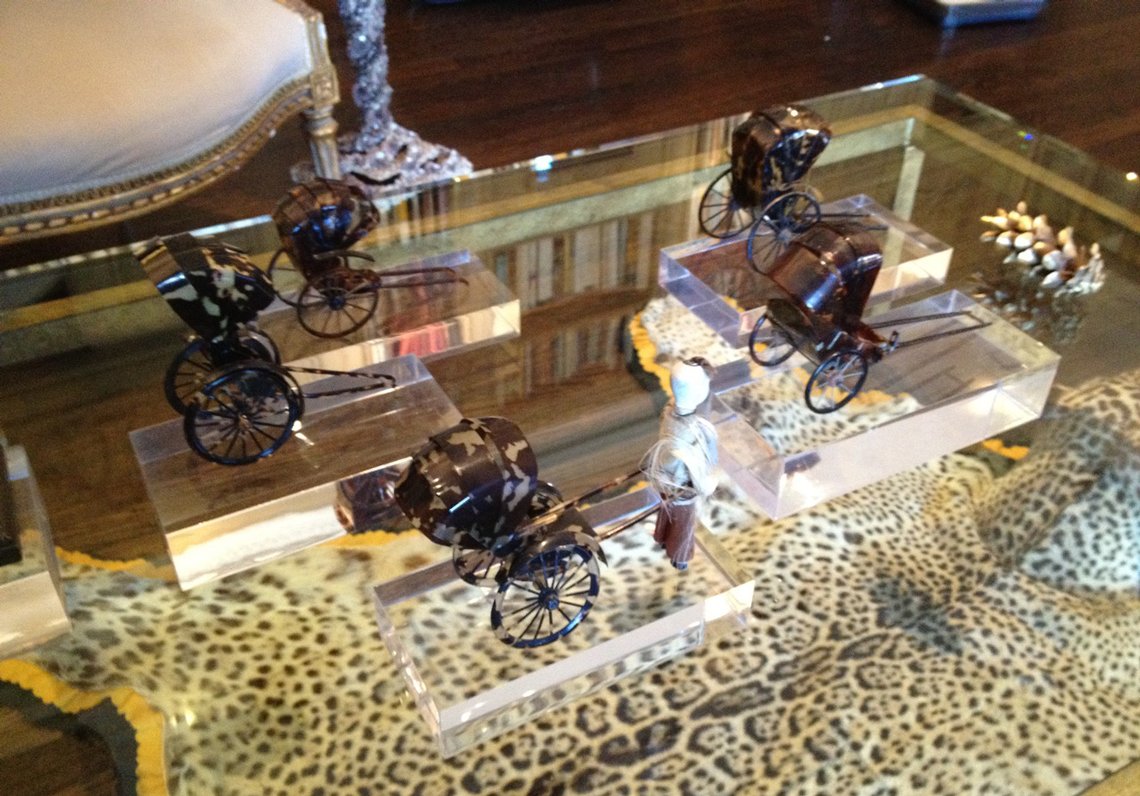 |
| The thrill of the hunt! Jeffry Weisman and Andrew Fisher, spouses and business partners, collect “zillions” of things, and decided that in order to reign in their mutual passion for shopping, a focus on these rare and expensive tortoiseshell rickshaws was a fun (and prudent) challenge. |
What is your advice on displaying collections — dos and don’ts?
Clutter is the enemy of beauty, so be strategic in finding a spot that allows each piece in a collection to be seen on its own as well as part of the larger group. Make sure there is enough and the right kind of light to show off the special attributes of the pieces you collect.
Any tips on talking to dealers, and what are some important questions to ask?
If quality, age or provenance are important in the pieces you collect you need to be careful to make sure you know what you are buying. If not, feel free to splurge based on beauty and price.
 |
 | |
Nina Campbell, photo by Sylvie Congranne |
NINA CAMPBELL
NINA CAMPBELL INTERIOR DESIGN
What do you collect, and what was the piece that inspired you to begin?
I collect contemporary ceramics. The first piece I saw was an enormous pine cone by Kate Malone which we bought for a client and it now sits on a large table in their New York townhouse. I then started to collect her pieces for myself.
For beginning collectors, can you suggest some categories or themes that might be good jumping off points?
I think ceramics are a good place to start and I think that going to End of Year shows at art schools can be fantastic places to find the artists of the future. The best advice ever given to me was by John Fowler when I worked for him he said “buy what pleases your eye and when it ceases to do so get rid of it and move on.” The first thing I ever bought thinking of this advice was a tiny painting which I still have 50 years later…in short, trust your eye!
 |
| In the bedroom Nina Campbell designed for Luxe Magazine’s Greystone Mansion Maison de Luxe Showhouse, a display of gilded flowers by North Carolina studio artist Tommy Mitchell. |
What is your advice on displaying collections — dos and don'ts?
I like to group collections. If they are small pieces they look great together in a Perspex tray. If they are large pieces, find a task light and put them alone with a light on so they really come into their own.
Any tips on talking to dealers, and what are some important questions to ask?
It is interesting when you visit dealers for a certain artist to find out who else they also represent as sometimes they can have an interesting stable of artists. Even better still try to meet the artists themselves, as that way when you have pieces of theirs in your home, you feel like your room is full of friends.
 |
 | |
Paul Wiseman |
PAUL WISEMAN, WISEMAN GROUP
What do you collect, and what was the piece that inspired you to begin?
I collect Han pottery and Warring States vessels. My first piece was a Warring States small vessel about 3,000 years old. In addition to vessels, I collect minerals. I started collecting minerals about 33 years ago when I met my spouse who was already collecting! We attend the Tucson Mineral show annually and I have taken many clients to the show and got them started on collections of their own.
What is your advice on displaying collections — dos and don'ts?
DO: In both of my collections I use mirrors so that you can see the fronts and backs of the pieces as they are too fragile to touch. In both my mineral collections, one more traditional and the other more modern, I have sloped the mirrors for an even better view of them.
DON’T: Don’t make your collections too similar otherwise the objects become boring.
 |
| Paul Wiseman collects ancient Chinese pottery, focusing on vessels from the Warring States Period and Han Dynasty. A bookcase with mirrored back panels displays both sides of his rare and fragile pieces, amplifying their exquisite contours. |
Any tips on talking to dealers, and what are some important questions to ask?
If you find something from a dealer that you really like, often the dealer knows a great deal more about the history of the object or similar objects that could be the beginning of a collection. For example, Joan Mirviss in New York, a Japanese Print and Ceramic dealer, got me interested but the genre is so vast that I had to narrow down my interest. So, I have a small collection of Japanese erotic art from the 16th–18th century. Whenever she finds something from that period and preferred genre, she shows it to me first.
 |
 | |
Kendall Wilkinson, photo courtesy Kendall Wilkinson Design |
KENDALL WILKINSON
KENDALL WILKINSON DESIGN
What do you collect, and what was the piece that inspired you to begin?
I lived in Paris and studied the city's architecture, antiques, and decorative arts, which remains a huge inspiration and still informs my design aesthetic. Before opening my eponymous design practice, I had a shop specializing in importing French antiquities and objet d'art. Buying antiques became a passion, and the shop allowed me to collect and share French antiques with the local San Francisco community.
For beginning collectors, can you suggest some categories or themes that might be good jumping-off points?
Start small, collect interesting accessories, individual chairs, benches, art, and table lamps. This way, you can explore multiple dealers and periods to determine the elements that you really love without making a major investment in larger pieces. Local antique markets are wonderful ways to find affordable items as budget is always crucial to consider. Collecting can become a huge financial investment, so it's important to do your research and gravitate to periods and elements that you love.
 | 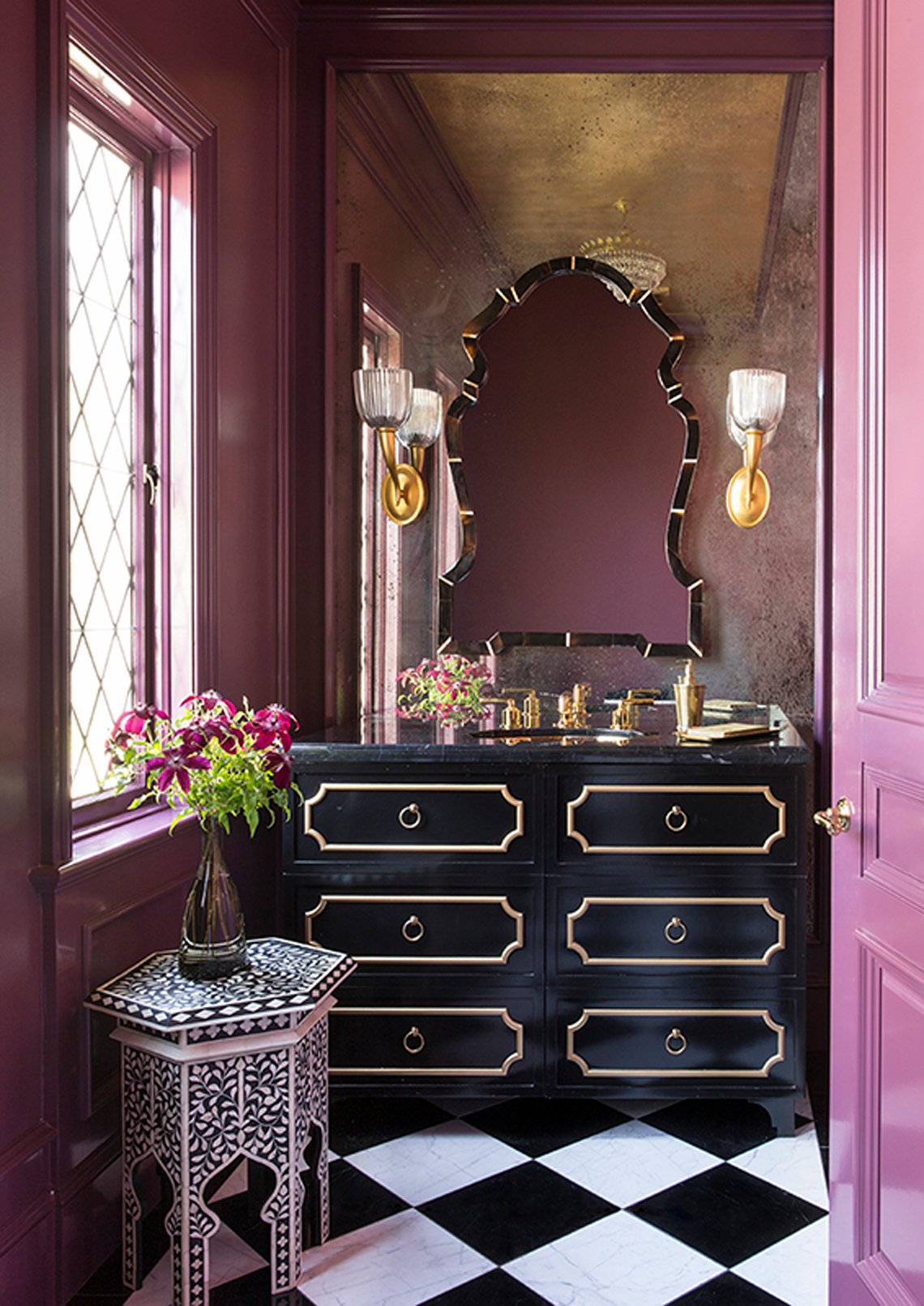 | |
Kendall’s advice on collecting antique furniture: start small, with interesting tables or chairs from different periods and styles, combining for an eclectic, modern look. Photos: l: David Livingston, r: Lisa Romerein. | ||
What is your advice on displaying collections — dos and don'ts?
Mixing antiques and vintage treasures with modern style brings a sense of authenticity and history to a contemporary interior. It can be provocative. I love it as I believe all good things go together. But be extra mindful of scale. The pieces must relate in size and proportion. Think how awkward a small antique bench would be sitting under a larger contemporary console, or new dining armchairs not fitting under the antique dining table. Design is about precision, intent, and execution. Antiques bring in the sense of history and authenticity, make sure you partner them well when mixing in with contemporary items.
Any tips on talking to dealers, and what are some important questions to ask?
Dealers are experts in the period they specialize in, take the time to engage in conversation, and ask lots of questions. We all cannot be experts in everything, so rely on their knowledge, experience, and passion. In the end, you will make some very meaningful friendships and experience different makers and styles, opening your mind to how incredibly vast antiquity is.
 |
 | |
Beth Webb, photo by Emily Followill |
BETH WEBB, BETH WEBB INTERIORS
What do you collect, and what was the piece that inspired you to begin?
I have a degree in art history and art has always been my first love. Works on paper were always an obsession and fixation, I suppose because I’ve always gravitated towards the intimacy of the medium. I had planned to major in studio art and changed course prior to going off to university as my father questioned my ultimate career course of what he deemed “starving artist”. Years later I was introduced by a friend to the Florence Academy of Art, whose curriculum derives from the classical-realist tradition rooted in the 19th century. I was fortunate enough to have represented the founder Daniel Graves and many of his teaching staff. Over the years I collected many works of theirs and their students. Visiting the school in Florence and being able to be in the artist’s studios was always the most inspiring part of the journey. So I began with Contemporary Realist works on paper then over the years began to add 19th century drawings to the mix.
For beginning collectors, can you suggest some categories or themes that might be good jumping off points?
First and foremost, buy what you love. In all the years I was an art dealer that was my first piece of advice to anyone. No matter what it is that you end up collecting it is important one is passionate about it. Every serious collector I know likens it to an obsession — an addiction. Whether it is Japanese netsuke or blanc de chine, find that thing you love and educate yourself.
 |  | |
| Beth Webb shares a few of her own loves: left, a display of supremely collectible carved and ceramic Chinese figurines, and right, works on paper, which she is drawn to for the intimacy of the medium. Photos by Emily Followill. | ||
What is your advice on displaying collections — dos and don'ts?
I’m a firm believer in defining your collections and prefer to group “like” objects. It is simple and at the same time very powerful and much more impactful amassed rather than scattered. There needs to be one defining element that holds it all together — think of the process as that of composing a canvas.
Any tips on talking to dealers, and what are some important questions to ask?
Every piece has a story to tell and a good dealer will know it, so provenance is first and foremost in my mind. It’s fascinating to hear the history behind the piece, its authenticity and attribution. When was it made, who originally owned it and how did it end up here? With many fine pieces there will be provenance provided and often original sales documents — the more information the better. Ascertaining the condition for any damage or repairs is also important. Condition reports are now more routinely provided than they have been in the past and a good dealer should be more than happy to share. Developing a relationship and trust with the dealer is quite important for several reasons. If you are forming a collection, a dealer you have a relationship with is going to reach out to you first when they come across something that may be of interest to you. A good dealer seeks long term relationships with their clients and an expert in their chosen field of specialization will always provide reliable information and advice. Also as your collection grows or you become more astute and sophisticated in your collecting, a good dealer will help you to trade “up,” buying or selling with their assistance.
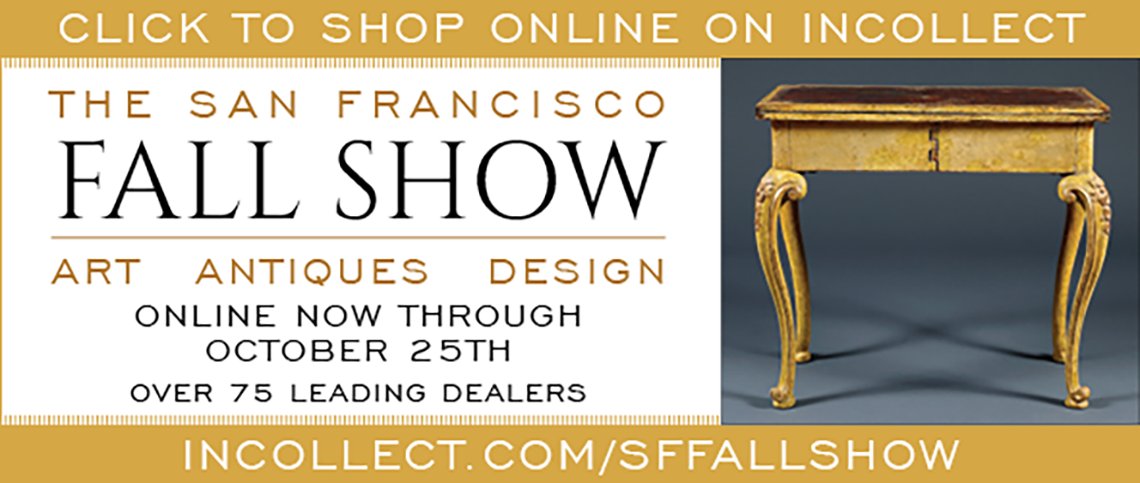 |











